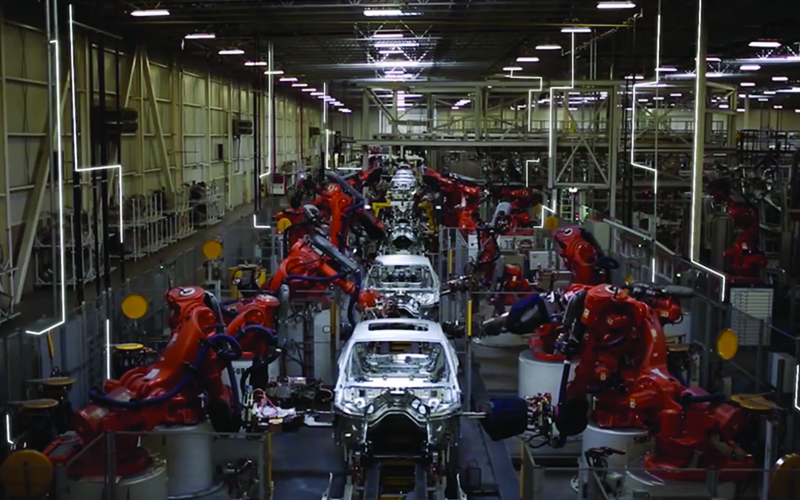Since 2017, General Motors (GM) has begun LED lighting system replacement for its facilities all over the U.S. with the help from Current by GE. Until now, the company has installed more than 50,000 LED fixtures and is incorporating sensors and controls into the new light fixtures to create a future-proof digital ceiling to improve its intelligent infrastructure and enhancing sustainability.
GM has continued to demonstrate leadership in sustainability through superior operational efficiency. In 2015, GM’s Lighting Strategy Committee began to focus on lighting improvements for large production centers. Current then demonstrated how LED could be a cost effective option regarding its reliability and technology.

(Image: Current by GE)
Account Manager Gene Taylor talked about the cooperation with GM, “We built a commercial and technical business case for LED going step-by-step. There are many types of lighting environments that GM has to think about—from assembly to production to paint—and they wanted a fixture that appropriately fit those different areas. It also had to be affordable, given the tens of thousands of lights that would be going up, and we were able to alleviate those concerns in multiple iterations. The strong dialogue between our teams can’t be understated here; it takes excellent communication to successfully steer a project this size.”
To date, Current has shipped more than 50,000 fixtures to over 20 GM facilities in North America and continues to install LED fixtures in the remaining sites. The last of the installations are expected to be completed by 2020. The automaker is already saving over US$2 million annually compared to its old fluorescent and HID lighting, and GM projects that number to increase as installations continue.
LED lighting is just another way GM is helping its facilities uncover opportunities for energy improvements. In 2016 alone, the company’s commitment to reducing energy intensity enterprise-wide saved US$73 million and avoided 388,000 metric tons of carbon emissions, equivalent to the electricity use of 57,000 homes.





 CN
TW
EN
CN
TW
EN






